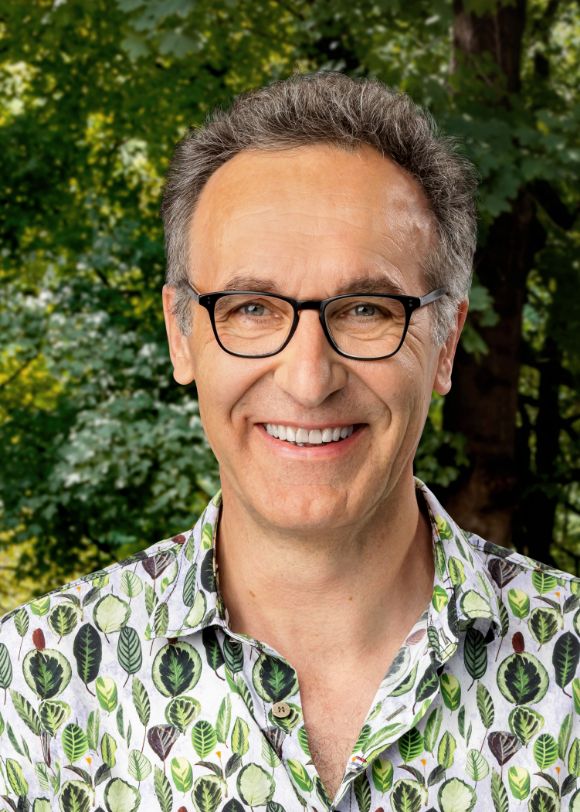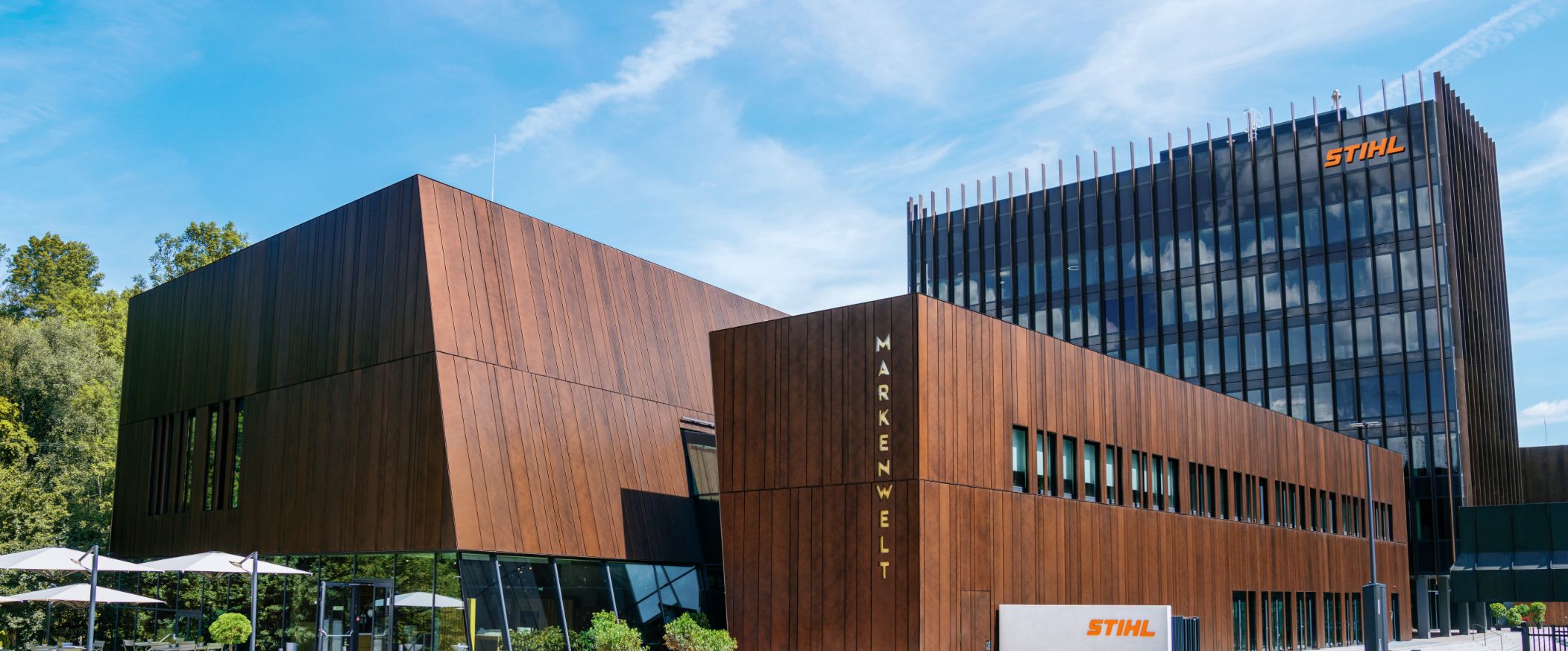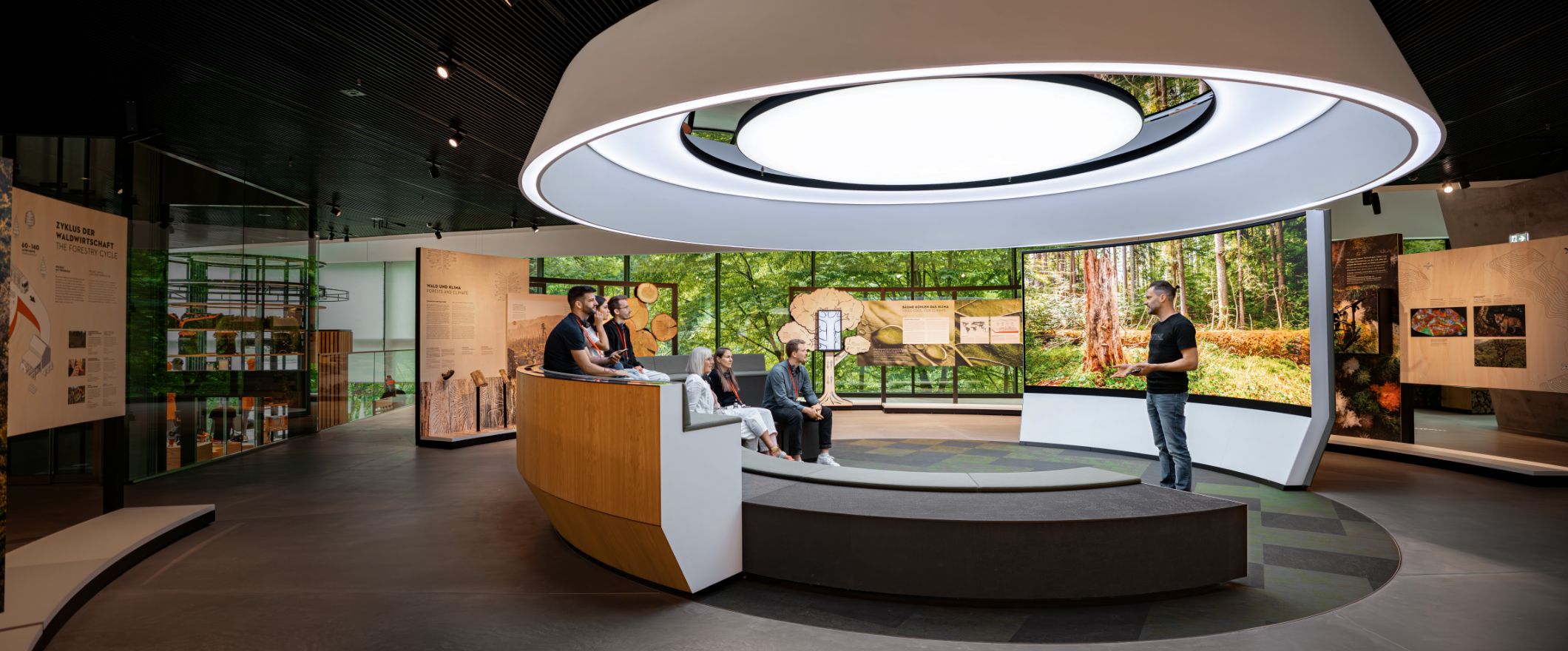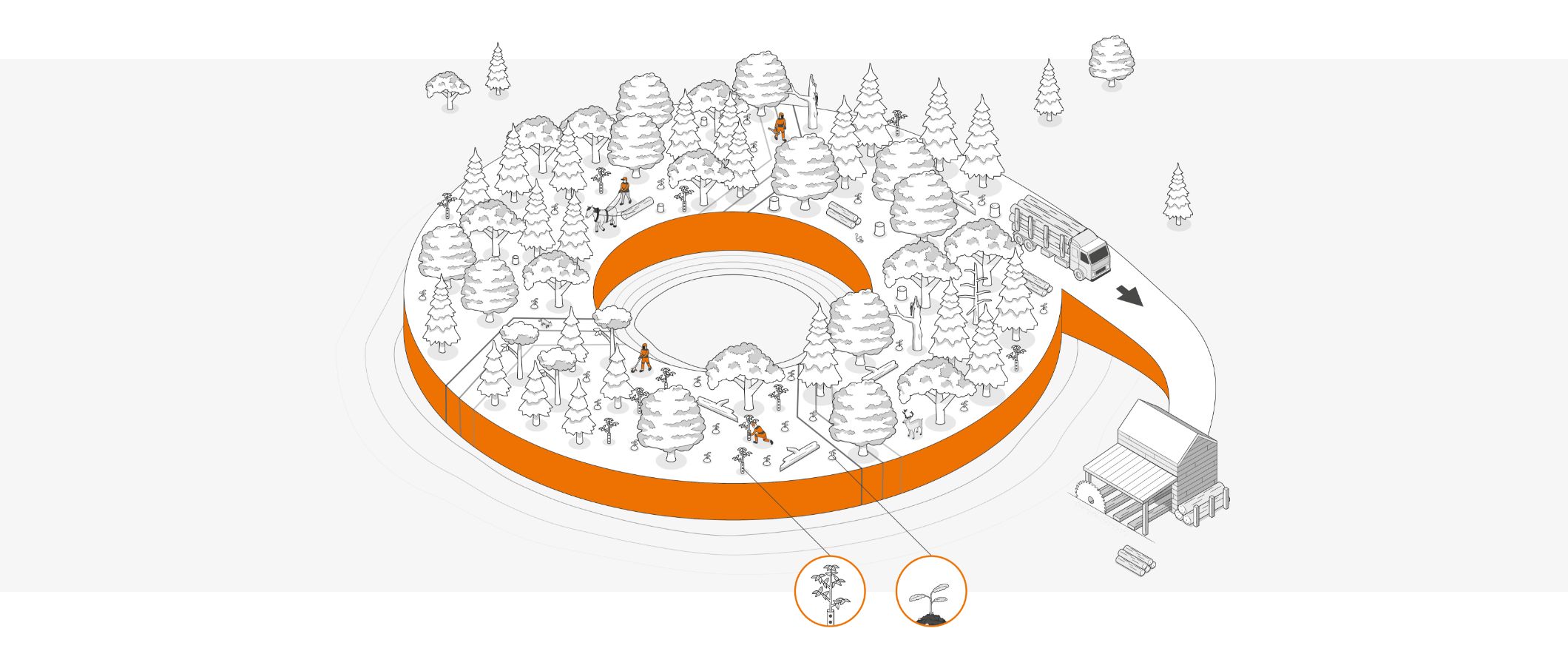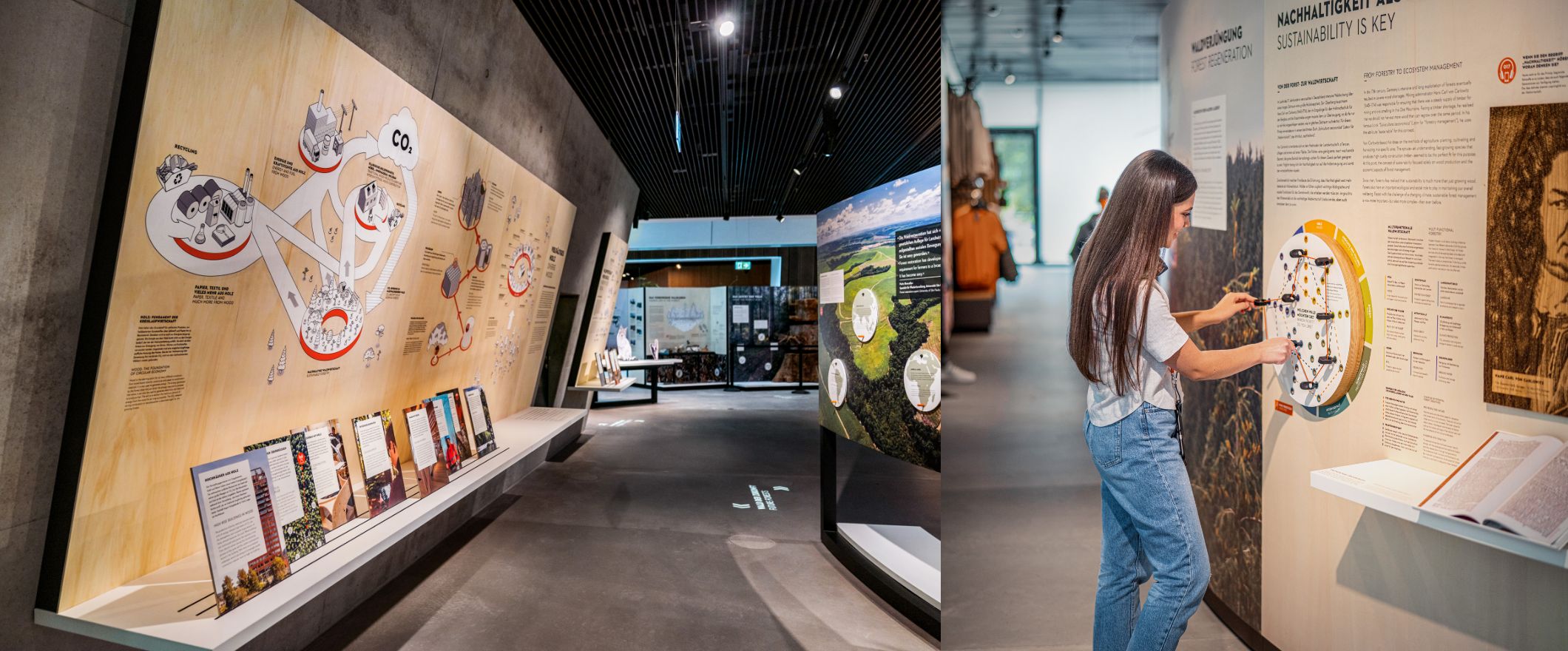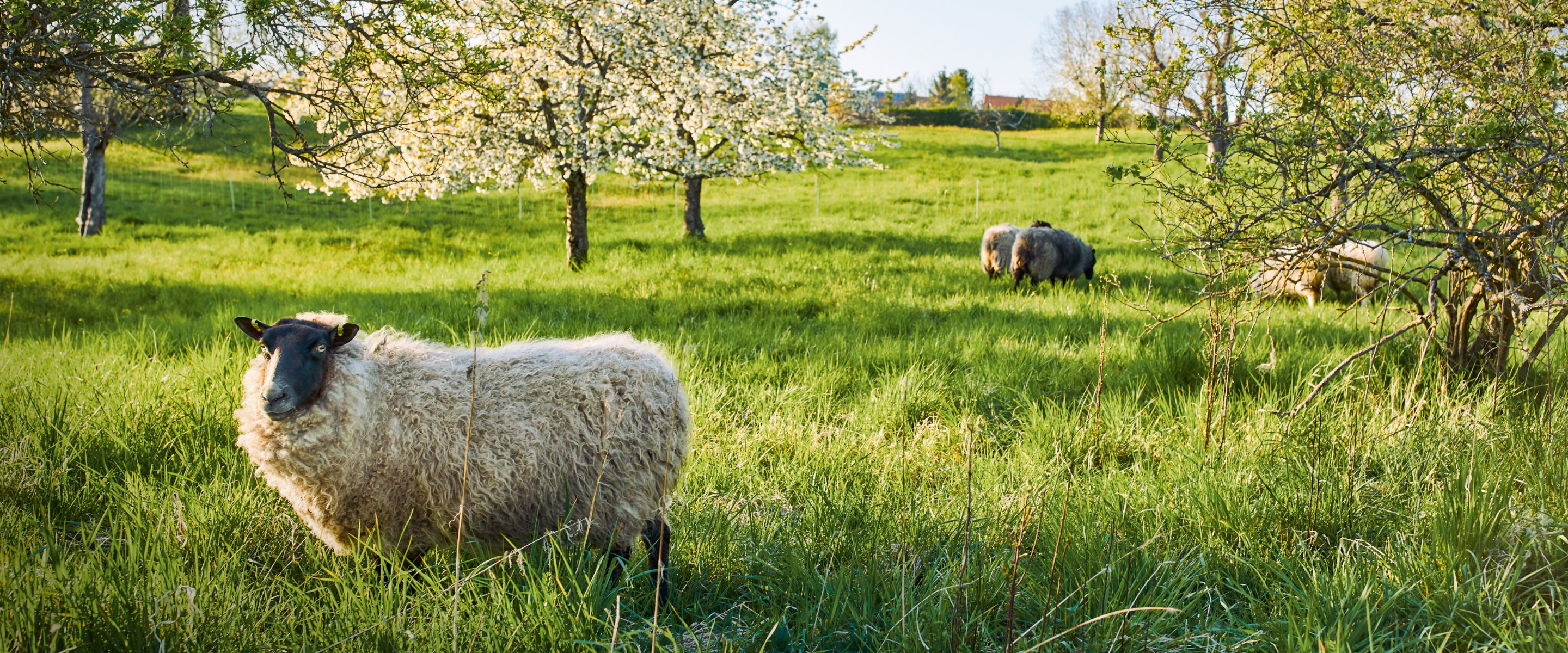In nature, for nature
STIHL tools are used in forest, landscape, and garden maintenance. As a manufacturer, we feel a special affinity for the environment and leverage our scope as a global business to help protect nature and the climate. Our aim is to conserve resources and keep the environmental impact of our business activities and our products to a minimum.
Around the world, STIHL bases its actions on the legal guidelines regarding environmental protection at the individual locations, both when it comes to manufacturing processes and the products it makes. The regulations that guide our actions include the European Regulation on Registration, Evaluation, Authorisation and Restriction of Chemicals (REACH) and the EU’s Restriction of Hazardous Substances Directive (RoHS). In 2023, no violations of relevant laws were reported.
Our own environmental and quality standards are often stricter than those required by law. Where it is not possible to avoid the use of potentially hazardous substances, we always act in accordance with the regulations and standards and do everything in our power to keep the impact of our business activities on humans and the environment to an absolute minimum. As before, we plan to draw up an inventory of all critical process chemicals such as biocides, which are added to cooling oils and process water. A sustainable concept for dealing with critical process chemicals takes various aspects into account, such as environmental compatibility, health, conservation, social responsibility, and economic efficiency. The individual measures include evaluating the necessity of critical process chemicals and selecting environmentally compatible alternatives. In addition, a concept of this nature encompasses a review of efficient use, including longer service lives, which help avoid waste. Ways to reuse, recycle, and recover chemicals also need to be investigated with a circular economy in mind. In this way we will make a contribution to the United Nations target of achieving the environmentally sound management of chemicals (SDG 12).
All of our production companies worldwide, as well as all ZAMA locations, have a certified environmental management system in line with ISO 14001. They are subject to recertification every three years, and external audits are conducted every year. Our current certificates for the German STIHL locations can be viewed on the STIHL corporate website. Regular internal audits round out the external reviews. Environmental officers at each of our plants are responsible for compliance with laws, standards, and guidelines.
Water and effluents
We require water mainly for steps in manufacturing, such as cleaning, cooling, and other processing stages. STIHL is working constantly to reduce its water consumption. The STIHL production company in Brazil treats roughly 200 cubic meters of effluents daily for use in production processes. The local site is optimizing its consumption through measures such as timers on showers and water faucets, as well as the use of rainwater in toilets. In the reporting year, our subsidiary ZAMA built a rainwater tank with a volume of 200 cubic meters at its production site in the Philippines. ZAMA plans to use the water in its toilets and for watering the plant’s landscaped outdoor spaces.
During some manufacturing processes, water is mixed with additives to act as a cleaning agent or to finish surfaces. We treat the resulting effluents in accordance with the applicable regulatory requirements before releasing them into wastewater collection systems.
In 2023, production companies Group-wide extracted around 581,000 cubic meters of water( previousy ear: 655,000 cubic meters).
Waste
Most of the waste generated at the STIHL Group is made up of packaging, wood, metal, and plastic. Hazardous waste, such as used oil or slurry containing metals, accounts for a small share. The latter is disposed of properly. Our approach to waste management follows the principles of prevention, recycling, and disposal. We sort the waste we generate. If possible, it is reused or recycled. What remains is properly disposed of. We regularly provide all members of staff with information about waste and raise their awareness of the contribution that they are capable of making.
In 2023, waste volume was slightly higher than the level reported in 2022, mainly due to construction work at the STIHL company in Brazil. While the proportion of other waste rose, the proportion of the other types of waste by material fell.
We continued our project on environmentally friendly packaging. The potential for savings with regard to our product packaging was identified in an analysis, which was initially performed for our Group member companies in Germany and Austria, as well as for individual types of packaging in Switzerland (chains) and the United States (mowing heads). In the reporting year, we finalized a large portion of the more sustainable alternatives and obtained technical confirmation by performing tests. We have already rolled out some of the new packaging options at the German STIHL locations, allowing us to reduce the thickness of the foil used in our spare parts packaging by 20 percent. We anticipate annual savings of 16 metric tons of plastics starting in 2024 as a result of this change. The conversion of our mowing head packaging from plastic to solid and corrugated fiberboard is expected to save an additional 111 metric tons of plastic. By the end of the reporting year, 20 percent of such packaging had already been converted.
Since early 2024, we have also been gradually doing away with the window on our chain packaging, eliminating a further 48 metric tons of plastic. Switching to mono materials additionally has a positive effect on the recyclability of our packaging, since different materials no longer need to be combined. Follow-up projects began in 2023 at STIHL Inc. in the U.S., as well as at STIHL companies in Brazil and China. The feasibility of the sustainable alternatives defined in the original project is currently being reviewed in the individual countries.
Converting our packaging allows us to make a contribution toward substantially reducing waste generation, a target under the goal “Responsible consumption and production” (United Nations Sustainable Development Goals, SDG 12).
Waste¹
in metric tons – values rounded
| |
2023 |
2022 |
| Total waste volume |
69,300 |
68,200 |
| Of which hazardous waste |
4,300 |
9,600 |
| ¹ Production companies only; data collection to be expanded in the future. |
Waste by material
VALUES ROUNDED (previous year in parentheses)
Energy and climate change mitigation
The STIHL Group is committed to protecting the climate and makes its contribution within the scope of its financial and technical abilities. Since 2020, we have been pursuing the goal of going carbon-neutral in the long term when it comes to our own business activities. However, we believe that reducing emissions should take precedence over offsetting them. Through our climate change mitigation activities, we make a contribution to the goal “Climate action” (United Nations Sustainable Development Goals, SDG 13).
To give our climate targets a solid foundation, STIHL has agreed on a commitment to the Science Based Targets initiative (SBTi).
Initially, our focus is on Scope 1 emissions under the Greenhouse Gas Protocol (GGP), which come from direct energy consumption.
At STIHL, such emissions result primarily from the combustion of gas and oil to generate process heat for the various manufacturing processes, as well as to generate heat for buildings. We record fuels used in development, adjustment processes in assembly, and our vehicle fleet, along with all coolant losses, under Scope 1. In Scope 2, we look at indirect emissions from electricity and district heating that we purchase.
The Scope 1 and 2 carbon emissions of all STIHL Group production and distribution locations around the world have been offset since the end of the reporting year, with the exception of our most recent acquisitions (COSMOS STIHL Manufacturing and Mogatec). Appropriate measures are expected at both companies in 2024 and 2025. In the long term, we aim to consume less energy and reduce the use of fossil fuels significantly throughout the STIHL Group. Doing so will lower the share of unavoidable emissions, which we currently offset by making positive contributions from climate protection projects in the form of carbon credits.
ENERGY ROAD MAP AT THE STIHL MAGNESIUM DIECASTING PLANT
As part of an energy road map, the STIHL magnesium diecasting plant aims to achieve significant reductions in energy consumption by 2030. To do so, the plant in Weinsheim has initiated a variety of projects. Since 2023, for example, it has been using local district heating from a neighboring industrial enterprise to heat its facilities, potentially saving up to 3 million kWh of electricity every year. The plant has also converted the lighting in three production halls to LED technology, resulting in annual savings of more than 300,000 kWh.
Reducing Scope 3 emissions
Emissions occurring in the upstream and downstream value chain (Scope 3) are not something we can influence alone. However, the STIHL Group still aims to make a contribution here in accordance with the targets under the Paris Agreement and under German legislation.
In 2022, we looked into which Scope 3 emissions categories are relevant to us. In the upstream value chain, those areas include raw materials, business travel, goods and services, waste, logistics, employee commuting, and fuels. In the downstream value chain, we intend to consider the use of our products and their disposal, as well as distribution logistics and packaging. We plan to define detailed reduction targets for Scope 3 emissions in connection with our commitment to the SBTi.
We have calculated product carbon footprints (PCFs) for initial portions of some products’ life cycles. The calculation involves determining the environmental footprint in CO2 equivalents in a life cycle phase. In the reporting year, we assessed the PCFs of four products from the personal protective equipment range. With regard to corporate carbon footprint (CCF), further efforts to round out the evaluation method for production were undertaken in the reporting year. For example, we calculated CO2 emissions in slide and plastic production, as well as for magnesium diecasting, in order to determine their CO2 share in comparison to emissions from raw materials. Calculations for additional manufacturing facilities are pending.
On average, however, the use phase accounts for 60 to 90 percent of our products’ emissions. Battery-operated products tend to lie on the lower end of the scale, depending on the local electricity mix. That is why our primary focus is on calculating Scope 3 emissions from the use of sold products (Scope 3.11). To do so, we are currently determining our influence with regard to such emissions, and are developing and validating measurement methods.
The STIHL plant in Qingdao, China, set Scope 3 reduction targets for the transport of materials and parts in 2023. The use of recycled packaging materials will act as one of the main methods for achieving those targets. By the end of the reporting year, a good 1,000 parts had been converted to sustainable cardboard packaging, saving up to 770 metric tons of CO2 a year. The STIHL distribution center in Dieburg has s to carbon-offset shipping options, despite using multiple transport service providers.
We are also taking specific measures in corporate mobility management. The mobility concept is made up of three main building blocks that are designed to lower the emissions associated with both business-related and personal mobility, including a corporate car sharing service to enable staff to travel between plants and the further electrification of fleet vehicles. Four electric cars were added at the founding company in the reporting year. With a total of nine electric cars and two hybrid vehicles, roughly 10 percent of our vehicle fleet was electrified by the end of 2023. In addition, we plan to set up charging stations for company vehicles and privately owned cars at the founding company’s headquarters in Waiblingen and in Weinsheim, Germany, to help facilitate the switch to electric vehicles.
Charging options have been available in the visitor parking lot of the distribution center in Dieburg since 2022, as well as at the STIHL plants in Austria and Switzerland. In 2023, Dieburg added 20 charging stations for employee vehicles, as well as charging outlets for e-bikes, while STIHL Inc. in the U.S. added another four vehicle charging stations.
The greatest potential for climate-friendly change lies in the way people commute to and from work – an area where the STIHL Group is helping reduce emissions. In August 2023, for example, it began offering staff in Germany financial support for the Deutschland-Ticket, which lets holders travel by all modes of local public transit within the country. The Group also provides an e-bike leasing program. In Qingdao, we also introduced an electric shuttle bus for staff in the reporting year. The first vehicle of its kind in the entire province of Shandong, it will reduce CO2 emissions by 17 metric tons a year.
Our path to a positive climate contribution
Ultimately, the STIHL Group aims to make a positive climate contribution in Scope 1 and 2. To this end, we focused on progress in four areas in the reporting year:
1) Defossilization
By 2030, we plan to reduce the use of fossil energy sources by 40 percent compared to 2019. The main fossil energy sources used at STIHL are natural gas and fuels. In 2019, their consumption stood at around 150 gigawatt-hours (GWh). All Group companies have drawn up plans for achieving this goal that include process optimizations and technological advancements. In mathematical terms, the plans will be enough to achieve our target. We will assess the progress of reducing consumption on a quarterly basis by way of a monitoring system.
The reporting year brought measurable progress at STIHL in Qingdao, for example, where we replaced the gas stoves in the cafeteria with electric models. The move saves 32,500 cubic meters of natural gas a year – the equivalent of 70.3 metric tons of CO2. In December 2023, the Swiss chain plant converted the gasfired heating on one of the hardening lines to electric heating elements, reducing CO2 emissions by 480 metric tons a year. By making further planned changes to equipment in production, the chain plant aims to cut its gas consumption and the associated emissions by more than half compared to 2019 levels by 2026.
2) Energy efficiency
We also aim to reduce our energy consumption – our measure of energy efficiency – and improve our energy intensity in the process. In 2023, our energy intensity per 1 million euros in revenue stood at 149.8 MWh (previous year: 166.1 MWh, 2019: 197.8 MWh). In the reporting year, we improved energy efficiency at the Chinese production plant, where the injection molding machines are cooled using water with a temperature of 23 degrees Celsius. Previously, the water temperature stood at 15 degrees Celsius. The move reduces the cooling equipment’s electricity consumption by 5,000 kWh a year. In addition, Qingdao now uses energy management software that makes it possible to monitor each electricity meter on a minute-by-minute basis. STIHL Inc. in the U.S. is preparing to introduce an energy management system in 2024. In the Philippines, ZAMA also optimized its cooling and compressed air supply technology in 2023. The STIHL Group’s Swiss chain plant saves 950,000 kWh of energy a year by supplying compressed air to treat chains on a timed basis rather than constantly.
3) Renewable sources of electricity
Since 2022, all STIHL production companies worldwide have been using electricity from renewable sources. So far, it has not been possible to do so at the ZAMA production sites in the Philippines, China, and Hong Kong due to a lack of availability. We plan to switch our most recent acquisitions, COSMOS STIHL Manufacturing and Mogatec, to green electricity by 2025 at the latest.
In addition, STIHL is constantly expanding the in-house generation of green electricity worldwide. The solar cells on the plant buildings in Qingdao, China, provide around 3.3 gigawatt-hours (GWh) of green electricity for the plant and roughly 1.2 GWh for the grid every year. In the reporting year, we equipped the roof of a new wing at the plant in Brazil with solar panels that produce up to 1.4 GWh a year and make the building self-sufficient in terms of energy. Ludwigsburg introduced a photovoltaic system that generates up to 730,000 kWh a year and allows the plant to meet roughly two-thirds of its energy needs. In the Philippines, ZAMA also plans to build a solar array. The increasing generation of electricity in-house reduces our emissions while also strengthening our energy security.
4) Carbon offsetting
To offset the emissions of all production and sales companies by the end of 2023, we purchased credits for 94,500 metric tons of CO2 emissions in 2022. One of the measures we support is a climate protection project focusing on drinking water purification in Uganda that gives schools modern filtration technology for drinking water treatment so that they no longer have to boil it over a wood fire.
We intend to make an even stronger contribution to permanent carbon capture and storage going forward. To this end, we continued our agroforestry project in cooperation with Fairventures in 2023, which aims to provide almost 500,000 seedlings to help reforest cleared land in Uganda and Borneo. Using an app, local farmers can scan the trees regularly to deliver precise data for calculating the amount of carbon stored. By doing so, STIHL plans to store a total of 120,000 metric tons of CO2 between 2023 and 2028.
Energy consumption and intensity
The energy management system at the German STIHL production plants has been certified in line with ISO 50001. Our aim is to save energy and costs through efficiency measures.
In 2023, our total energy consumption (Scope 1 and 2 under the GHG Protocol) amounted to roughly 424 gigawatt-hours (GWh), which was 73 GWh, or around 15 percent, below the previous year’s level (497 GWh). At 67 percent, the largest share of energy consumption is attributable to electricity, in particular for production, with natural gas to heat buildings accounting for 28 percent. Electricity consumption stood at 285 GWh in the reporting year (previous year: 331 GWh), whereas natural gas consumption amounted to 118 GWh (previous year: 146 GWh). The decline in energy consumption was due to the general economic situation in the reporting year, which led to a decline in sales. That decline in sales then led to the need for temporary adjustments in production.
Energy consumption¹
in GWh – values rounded
| |
2023 |
2022 |
2021 |
2020 |
| Natural gas |
117.8 |
146 |
160 |
141 |
| Heating oil |
2.6 |
2.8 |
5.8 |
4.5 |
| Fuel² |
13.5 |
13.8 |
12.5 |
12.1 |
| Renewable energy (geothermal heating and cooling) |
2.4 |
1.6 |
1.3 |
2.5 |
| Total direct energy consumption |
136.3 |
164.2 |
179.6 |
160.1 |
| Electricity |
285 |
331 |
332 |
294 |
| Of which from renewable sources |
254 |
297 |
160 |
67 |
| District heating |
2.5 |
1.6 |
2.4 |
2.1 |
| Total indirect energy consumption |
287.5 |
332.6 |
334.4 |
296.1 |
| Total energy consumption |
423.8 |
496.8 |
514.0 |
456.2 |
| ¹ Including STIHL Ventures GmbH and STIHL International GmbH, which are based at the founding company’s headquarters. |
| ² Gasoline, diesel, and LPG for stationary and mobile applications. |
In 2022 and 2023, we reduced our gas consumption on account of the impact of the Russia–Ukraine war. The steps taken to do so included powering down our cogeneration plant at the Waiblingen location. We also took preventive measures that would allow us to maintain gas-powered processes in the event of a gas shortage and supply buildings with oil-generated heat as an alternative. Heating oil consumption did not increase appreciably compared to 2022.
Energy intensity¹
in MWh per 1 million euros in revenue – VALUES ROUNDED
Approximately half of our gas consumption was attributable to the STIHL Group’s German locations. We use most of the gas for processes such as casting and metal hardening. However, we are constantly looking for ways to reduce gas consumption and replace natural gas with sustainable sources of energy.
Emissions and emission intensity
Measured in CO2 equivalents, emissions at our German locations and at the international STIHL production companies amounted to 46,788 metric tons in total in 2023 (Scope 1 and 2 under the GHG Protocol, previous year: 53,685 metric tons). We offset these emissions through positive contributions to c limate p rotection p rojects (see “Offsetting,”).
In line with the decrease in energy consumption, the Group also recorded a drop in CO2 emissions.
Greenhouse gas emissions¹
in metric tons of CO₂e – values rounded
| |
2023 |
2022 |
2021 |
2020 |
| Natural gas emissions |
23,695 |
29,980 |
32,570 |
28,860 |
| Heating oil emissions |
699 |
710 |
1,510 |
1,180 |
| Fuel emissions |
3,198 |
4,620 |
3,300 |
3,340 |
| Coolant emissions |
1,623 |
980 |
1,310 |
790 |
| Total direct emissions (Scope 1) |
29,215 |
36,290 |
38,690 |
34,170 |
| Electricity emissions |
17,474 |
17,330 |
55,060 |
66,450 |
| District heating emissions |
99 |
65 |
90 |
120 |
| Total indirect emissions (Scope 2) |
17,573 |
17,395 |
55,150 |
66,570 |
| Total emissions (Scope 1 and 2) |
46,788 |
53,685 |
93,840 |
100,740 |
| Of which offset |
46,788 |
53,685 |
19,800² |
0 |
| ¹ Including STIHL Ventures GmbH and STIHL International GmbH, which are based at the founding company’s headquarters. |
| ² STIHL Germany: founding company and Dieburg distribution center. |
In 2023, we obtained around 90 percent (previous year: 90 percent) of our electricity needs from renewable sources.
Emissions and emission intensity are presented using the market-based approach. The calculation takes into account hazardous greenhouse gases under the GHG Protocol, which mainly consist of CO2 emissions. Although STIHL only generates negligible volumes of other greenhouse gases, such as coolants, such emissions are included for the sake of completeness.
Emission intensity¹
Scope 1 and 2 in metric tons of CO₂ per 1 million euros in revenue, without offsetting – values rounded

